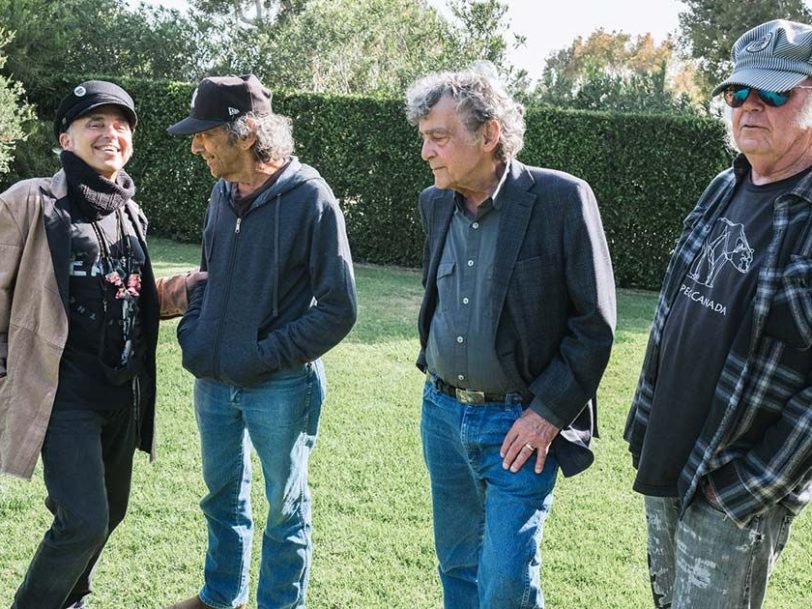Few musicians are able to get six decades into their career and still come up with new ways to challenge themselves. For Neil Young, however, raising the bar is part of the point of existence, and when he recorded his 43rd studio album, World Record, in 2022, he was in the middle of a burst of creativity spurred on by a recent reunion with his longtime backing band Crazy Horse. 2019’s Colorado marked the first Horse album in seven years, with guitarist Nils Lofgren, whose time with Young goes back to the After The Gold Rush sessions and the legendarily crowd-baiting Tonight’s The Night tour, taking over from a retired Frank “Poncho” Sampedro. With its follow-up, Barn, Young and the Horse recaptured the elemental magic of their best work together, and it’s this, Lofgren tells Dig!, that they brought to the sessions for World Record, along with a sonic palette Young had never before explored with the group.
Listen to ‘World Record’ here.
“We were playing live on the stage, no headphones, just like in a nightclub, in this draughty ancient barn up in the Colorado Rockies,” Lofgren says of the moment Young and Crazy Horse found their stride once again. In particular, while recording the Barn song Welcome Back, Young shifted gears without notice, and pulled Crazy Horse forward with a whole new momentum.
“We went through it once, and we were really hitting it hard,” Lofgren says of the group’s initial pass at the song. “And then all of a sudden, Neil just started the take you hear on the album. And everything got quieter; I think Ralph [Molina, drummer] picked up some brushes. It’s got this spooky, airy vibe – not unlike Tonight’s The Night. We didn’t belabour it. And we carried that into World Record.”




